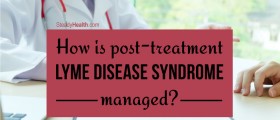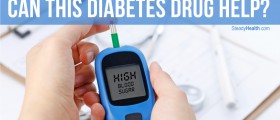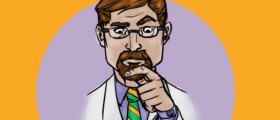Morgellons disease, Morgellons or Morgellons syndrome is a series of symptoms sensed on the skin. Although this is not a medical condition recognized by the Centers for Disease Control, people all over the world (including Americans) have reported similar symptoms and suffer from very similar problems. Texas, Florida, and California are found to be the states with more than the average number of people suffering from this problem.
Morgellons Signs and Symptoms
Patients diagnosed with Morgellons disease have reported crawling sensations under the skin, which might be described as biting, stinging, or moving like an insect on or under their skin. In some cases, these patients complain about black stringy material or fibers also on and in their skin, and they suffer from skin rashes and sores, which itch intensively.

They can experience more problems, such as joint pains, vision problems, and tiredness. Without any other apparent reason, except Morgellons, these people can suffer from concentration difficulties, short-term memory problems, and also undergo some behavioral changes.
What Scientists and Doctors Know about Morgellons
Doctors still don’t know what causes this condition, and many are convinced that Morgellons is just another type of the disease known as delusional parasitosis when a person suffers from false beliefs that he or she is infested with parasites. Symptoms similar to Morgellons are frequently noticed in people suffering from liver and kidney problems, or in patients suffering from Lyme disease.
- The characteristic filaments are microscopic, visually resembling textile fibers, and are white, black, or a more vibrant color, such as red or blue. In addition to fiber production, some patients may experience formication, described as stinging, biting, creeping and crawling sensations.
- The symptoms of MD are not limited to the skin. MD patients experience a variety of systemic manifestations, such as fatigue, joint pain, cardiac complications, cognitive difficulties, and neuropathy, all symptoms that are commonly reported by Lyme disease (LD) patients.
- A case definition for MD is proposed: a somatic LD-like illness associated with spontaneously appearing, slowly healing, filamentous, ulcerative skin lesions, with the key diagnostic criterion being colored, white, or black filaments protruding from or embedded in skin. Patients diagnosed with MD, either by self-diagnosis or by a health care practitioner, are not a homogeneous group, thus highlighting the need for a universally accepted case definition.
- If MD specimens are examined, they demonstrate evidence of abnormal keratin and collagen expression. In addition to the formation of abnormal cutaneous fibers, many patients report changes to hair and fingernails. Deformed follicular bulbs, pili multigemini (formation of multiple hair shafts within individual follicles), filamentous projections from the follicular sheath surrounding hair bulbs, and the formation of thickened keratin projections are common findings.
Drug addicts or alcoholics can also manifest some of the symptoms characteristic of Morgellons, as well as some schizophrenic patients.
What to Expect from the Treatment
There is no agreement among the medical community regarding this problem, and doctors act and treat their patients differently. Some patients claim that their doctors dismiss them as fake patients, although they have been suffering from Morgellons symptoms, and others believe that they were falsely diagnosed with some other medical condition, rather than Morgellons they are suffering from.
Still, there is not even one single treatment for this problem. The best advice is to seek medical attention from a caring doctor, who will recognize your symptoms and try to solve them. Your best bet might be the doctor situated in your local area, who will be available when you need him or her.
Positive steps to manage symptoms you have may include various therapies, so maintain an open mind. Some patients suffering from Morgellons might benefit from different counseling and mental health therapies, and you have to be prepared that the treatment might take some time. Other symptoms, like depression or anxiety, or anything else that’s affecting your behavior may have to be addressed as well, during the treatment for Morgellons.















_f_280x120.jpg)

Your thoughts on this
Loading...